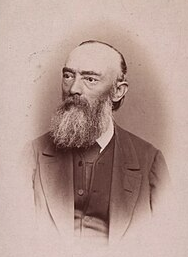Bayern Friedrich

Friedrich Bayern (b. October 8, 1817, Kronstadt, Transylvania — d. February 26, 1886, Tbilisi) was an Austrian naturalist and archaeologist, one of the founders of the Museum of Caucasus.
He worked in the Caucasus since 1849. In 1855, he settled in Tbilisi and opened the “Museum of Naturalist Bayern” in Didube. In 1859-1863, he was the Curator of the Department of Natural Sciences in the Caucasus Museum. In order to collect geological, botanical and entomological material, he visited Armenia, Dagestan and almost all of Georgia. Several species of plants previously unknown to science were studied on the basis of the material collected by him. Some were named after Bayern. In 1868, Bayern gave his collection (32,686 exhibits) to the newly opened Caucasus Museum. He became interested in archeology in 1859, when Urartian cuneiform inscriptions were discovered on the slopes of Ararat near Igdir. The last 20 years of his life were devoted to archaeological research. He discovered Dolmens in Abkhazia; excavated early medieval necropolises near the Black Sea, Sartichala and Dusheti, as well as Late Bronze Age tomb “Redkin Lager” in Dilijan valley.
In 1872, the excavation of the necropolis of the principality began, where late bronze, early iron, antique and early feudal age tombs were discovered, as well as the remains of a glass factory. Bayern published excavation reports in Russian (Tbilisi), German (Berlin and Vienna) and French (Lyon).
World science learned a lot about the archaeological antiquities of Georgia through Bayern's excavations. Though certain elements of Bayern’s work were criticized by Georgian, Russian and European scientists of that period.
Literary work: "Redkin-Lager", Berlin, 1882; Neue Ausgrabungen in Samthawro, იქვე; Untersuchungen über die ältesten Gräber und Schatzfunde in Kaukasien, B.,1885; О древних сооружениях на Кавказе, «Сборник сведений о Кавказе», 1871, т. 1; Исследование древних гробниц близ Мцхета, იქვე, 1872, т. 2.
G. Lomtatidze
I. Gagoshidze


